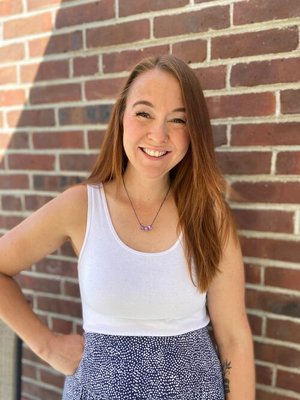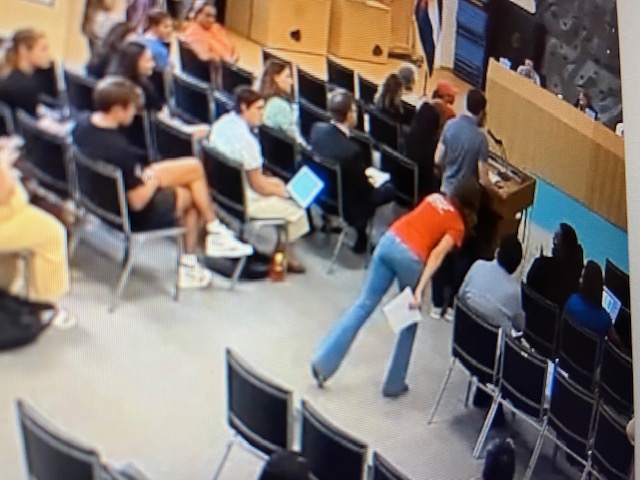As the swirling debate over school safety escalates in Denver Public Schools, Erin Pier wants district leaders, educators and parents to step back and take a broader view of the issue.
“I believe every kid should be served by their community and their school. Schools need to do more; they need to figure out how to meet the needs of all their students and not just push out the kids who they are scared of,” says Pier.
She has years of experience as a licensed school psychologist in Aurora and Denver school districts, and now works with students ages 14 to 21 at the AUL alternative charter school in North Denver. Her focus is to support students involved in the criminal justice system to help them and their families navigate the courts, stay in school and avoid incarceration.
Her school has had success with students who didn’t fit in at bigger traditional high schools for various reasons including discipline problems. AUL (formerly Academy of Urban Learning) has grown from 40 to 150 students in the past eight years under the leadership of Principal Jennifer Jackson, who left the school at the end of the 2022-23 academic year.
“Jen brought in a trauma-informed approach that emphasizes building relationships with every student,” Pier says.
Trauma-informed instruction was pioneered by Dr. Bruce Perry, a psychiatrist, researcher and educator specializing in child and adolescent mental health. His neuroscience research helps train educators to understand and help teach students impacted by severe stress in their lives.
“It’s far more complex than traditional physical trauma,” explains Pier, who was trained by the Colorado-based Educational Access Group. “It is housing insecurity. It’s food insecurity. It’s extreme poverty. It’s losing people in your life to drugs or violence … When you perceive that your personal safety is at risk, it impacts your mental health and can affect your ability to focus, to learn, to sleep at night, to have positive relationships.”
And those hardships can sometimes lead to physical fights and violence. When she was the psychologist at an Aurora middle school, for example, she recalls that students who experienced various forms of trauma were consigned to a classroom with students who also had discipline problems.
Not surprisingly, behavior problems snowballed.
“Something would trigger them, and they would have a meltdown, just like a little kid would have a meltdown, but these were big kids now. The teacher was overwhelmed with the extreme needs of these kids, so the school called in the SRO (School Resource Officer) to arrest these kids … It was awful to watch how we treated these kids who had obvious trauma and mental health needs but lacked the kind of resources to help them.”
This month, the Denver school board voted 4-3 to restore SROs – armed Denver Police officers – to high schools starting in the fall. In addition, Superintendent Alex Marrero is set to release a detailed plan to enhance school safety measures across the district by June 30.
Pier, a mother of three young children, recognizes the need to prioritize safety as an educator and a DPS parent.
“I understand that kids, parents and teachers need to feel safe. But ostracizing a single kid who obviously is going through a crisis is not the solution.”
She believes that smaller schools or smaller settings within larger schools can make a difference not just for intervention and safety but for overall student success.
“One of the beautiful advantages of AUL is that we know every one of our students. For example, we track attendance closely, and when a student was not at school, we had the capacity to do home visits. If you have a school with 2,000 kids, you typically don’t have the staff or capacity to keep track of every kid every day.”
Given structural challenges and limited resources, it is highly unlikely that DPS will reorganize high schools into smaller settings. Alternatively, Pier advocates more district support for successful alternative schools and for mental health services and staffing at bigger schools. Even with budget considerations, she encourages school administrators to seek outside resources.
“If schools want to create mental health teams, they can. They can get grants from non-profits and others to do that,” says Pier, who raised hundreds of thousands of dollars writing grant applications for AUL.

JJ Reed is student body president at AUL who just finished his first year at the school.
“It’s a whole different dynamic than regular schools,” says the 17-year-old. “Every student has a relationship with every teacher and staff member, and all the students know each other.”
Like other schools, AUL has its share of discipline issues, doesn’t tolerate weapons, and has routine security checks.
“But our school doesn’t believe in putting kids in jail,” he says. “It can be scary to have a police officer at school with a gun on his hip.”
JJ says he feels safe at AUL in part because “it’s a tight-knit community in a campus environment that’s easier to control.”
The school has encouraged his ambition to go to college and run for office, which he became interested in after testifying at the Legislature earlier this year in support of a bill sets a higher bar for student expulsions.
HB 23-1291, which was signed by Gov. Polis on June 1, establishes new requirements such as providing parents with supporting evidence at least two days before a hearing officer hears an expulsion case, requires hearing officers to complete expanded training that includes child and adolescent brain development, restorative justice, alternatives to expulsion, trauma-informed practices, and potential bias in applying discipline.
Student safety goes far beyond school discipline policies, however.
“When I think about the reaction of parents to what happened at East and McAuliffe, the root of it is guns and access to guns,” Pier says, referring to the March shooting at East High School and a subsequent controversy at McAuliffe International Middle School over a student with a violent record.
Nationally, gun deaths (including suicides) surpassed auto accidents in 2020 as the leading cause of death for those 18 and under, according to the federal Centers for Disease Control. In Colorado, a recent survey in the Journal of the American Medical Association shows that one in four high school students responded that they could obtain a loaded gun within 24 hours.
“Why should we be shocked by guns at school when so many people have access to guns?” asks Pier.
The depth and complexity of these issues have spurred her to launch a community-based Transformative Justice Project that extends her advocacy for students beyond AUL. Pier will dedicate her time year-round to helping them and their families with the justice system. She and AUL social worker Barbara Garza will support young people up to age 25 with court appearances, meetings with attorneys and pre-trial officers, family and education issues.
They will leave AUL this summer to start their new program working with the Colorado Juvenile Defender Center.
“Our goal is to stay connected with these students to help provide them with appropriate services,” Pier said. We want to grow to serve more students, continuing our relationships from AUL and partner with other alternative schools as well.”




